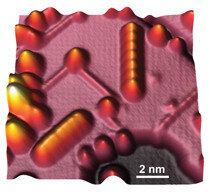
European Sharc25 project aims to achieve 25 percent efficiency with thin-film solar cells
June 11, 2015
A new European research project that goes by the name Sharc25 is setting out to make an extremely efficient thin-film solar cell for the next generation of more cost-effective solar modules. Its objective is to achieve up to 25 percent efficiency in thin-film solar cells made by the co-evaporation of copper indium gallium (di)selenide, or CIGS for short. That kind of performance would top the previous best mark by just over three percentage points.
The International Iberian Nanotechnology Laboratory (INL) in Braga is a partner in this project, which is coordinated by the Centre for Solar Energy and Hydrogen Research Baden-Württemberg (ZSW). Altogether, eleven research partners from eight countries are on board. The list of partner also includes EMPA (Swiss Federal Laboratories for Materials Science and Technology), the universities of Luxembourg (LU), Rouen (F), Parma (I) and Aalto (FIN), the IMEC (Interuniversitair Micro-Elektronica Centrum VZW in B), the HZB (Helmholtz-Zentrum Berlin für Materialien und Energie in D), Flisom AG (CH), and Manz CIGS Technology GmbH (D).
Launched in May, the project will run for 3.5 years and get €4.6 million in EU funding sourced from the research framework program Horizon 2020. The Swiss government is providing another €1.6 million. The results of this project could well give the European solar industry a boost.
The idea behind this EU project is to pool these eleven organizations’ multidisciplinary skills in a bid to develop better cells.
INL researchers will focus on the investigation of electronic surface properties on the nanometer scale. The Laboratory for Nanostructured Solar Cells has renowned expertise in using scanning probe microscopy methods to improve the understanding of nanoscale materials properties in the solar cell materials investigated in the project.
Read the full Press Release here
